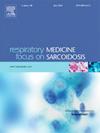揭穿 GAMLSS 的神话:肺功能诊断中的简易性统治。
IF 3.5
3区 医学
Q2 CARDIAC & CARDIOVASCULAR SYSTEMS
引用次数: 0
摘要
理论依据:目前的技术标准主张在肺功能参考方程中使用位置、尺度和形状的广义相加模型(GAMLSS)。目标:(1)证明在肺功能诊断中,分段(片断)线性回归(SLR)可获得与 GAMLSS 相似的预测精度。(2)确定 SLR 和 GAMLSS 之间的一致性:方法:利用 NHANES 2007-2012 年数据库,使用 SLR 和 GAMLSS 建模技术构建 FEV1、FVC 和 FEV1/FVC 的肺活量参考方程。采用 K 倍交叉验证提供均方根误差 (RMSE) 的 95% 置信区间 (CI),作为预测准确性的指标。此外,还使用非加权卡帕统计量评估了两种建模技术在肺活量测量模式(标准、气流阻塞、限制性或混合障碍)分类方面的一致性:结果:两种技术的 FEV1、FVC 和 FEV1/FVC 均方根误差值以及预测值与测试数据之间的相关系数相似。两种技术在肺活量模式分类方面的一致性为 0.78 至 0.80(95% CI):研究结果表明,FEV1/FVC 的简单线性回归和 FEV1 和 FVC 的 SLR 预测准确度与 GAMLSS 相当,但更直接、更简便,可用于肺功能诊断领域的更广泛人群。本文章由计算机程序翻译,如有差异,请以英文原文为准。

Debunking the GAMLSS myth: Simplicity reigns in pulmonary function diagnostics
Rationale
Current technical standards advocate using Generalized, Additive Models of Location, Scale, and Shape (GAMLSS) for lung function reference equations. These equations are complicated and require supplementary spline tables.
Objective
(1) To demonstrate that segmented (piecewise) linear regression (SLR) yields prediction accuracies similar to GAMLSS in pulmonary function diagnostics. (2) To determine the agreement between both SLR and GAMLSS.
Methods
The NHANES 2007–2012 database was utilized to construct spirometric reference equations for FEV1, FVC, and FEV1/FVC using both SLR and GAMLSS modeling techniques. K-fold cross-validation was used to provide the 95% confidence interval (CI) of the root-mean-square error (RMSE) as an indicator of prediction accuracy. Additionally, agreement was assessed between the two modeling techniques in classifying spirometric patterns (standard, airflow obstruction, restrictive, or mixed disorder) using an unweighted kappa statistic.
Results
The RMSE values for FEV1, FVC, and FEV1/FVC and correlation coefficients between predicted values and test data were similar between the two techniques. Agreement in classifying spirometric patterns between the two techniques ranged from 0.78 to 0.80 (95 % CI).
Conclusions
The findings suggest that simple linear regression for FEV1/FVC and SLR for FEV1 and FVC offer prediction accuracies on par with GAMLSS while being more straightforward, parsimonious, and accessible to a broader audience in the field of pulmonary function diagnostics.
求助全文
通过发布文献求助,成功后即可免费获取论文全文。
去求助
来源期刊

Respiratory medicine
医学-呼吸系统
CiteScore
7.50
自引率
0.00%
发文量
199
审稿时长
38 days
期刊介绍:
Respiratory Medicine is an internationally-renowned journal devoted to the rapid publication of clinically-relevant respiratory medicine research. It combines cutting-edge original research with state-of-the-art reviews dealing with all aspects of respiratory diseases and therapeutic interventions. Topics include adult and paediatric medicine, epidemiology, immunology and cell biology, physiology, occupational disorders, and the role of allergens and pollutants.
Respiratory Medicine is increasingly the journal of choice for publication of phased trial work, commenting on effectiveness, dosage and methods of action.
 求助内容:
求助内容: 应助结果提醒方式:
应助结果提醒方式:


